
views
Washing Your Feet in a Tub
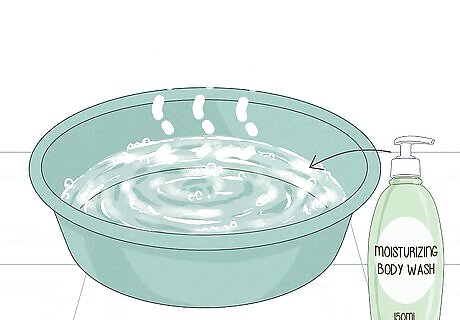
Fill a small tub with warm water. Adjust the temperature to your zone of comfort, making sure to check the temperature with your hand or wrist and not your feet, as your feet can have less sensation. Be sure to keep the temperature warm, but not hot. Add mild dish soap or body wash into the water. Swirl the water until you see a layer of bubbles appear on the top. Use a tub that is large enough to accommodate your feet with a little extra room. You can also use a bar of soap as an alternative to liquid soap. If you have diabetes or another similar health condition, make sure you check the temperature of the water using your wrist and not any part of your lower extremities.
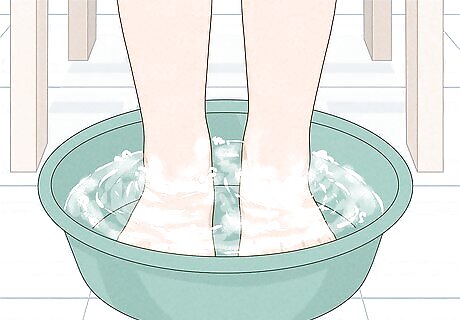
Submerge your feet in the water. In order to properly clean your feet you must soak them in the soapy water. Sit down in a chair and gently place your feet into the tub until they reach the bottom and/or are completely underneath the water. If you have built-up dirt on your feet, let them soak for at least 5 minutes. Wipe up any water that splashes out of the tub to prevent injury from slips.
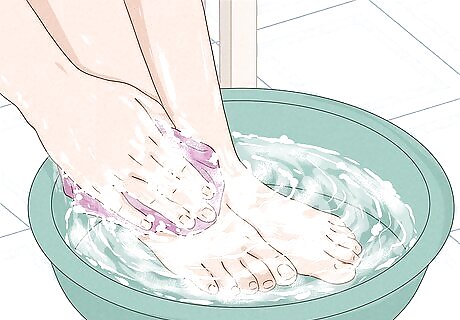
Wash your feet. Washing your feet daily prevents foot odor and infection. Using a wash cloth, flannel, loofah, or sponge to scrub the dirt away will leave your feet sparkly clean. Gently scrub each foot, focusing your attention on the arch of your foot, in between toes, and under toenails. If you have built-up dirt, you will need to scrub a little harder and use more soap. Soak your wash cloth, flannel, loofah, or sponge in the water and wring it out so it’s moist, but not soaked. Rinse whatever your using between cleaning each foot. If you notice the water is very dirty, discard it and use fresh water to rinse off the soap. Gently rub a pumice stone over the bottom of your feet to remove dead skin and leave your feet feeling smooth.
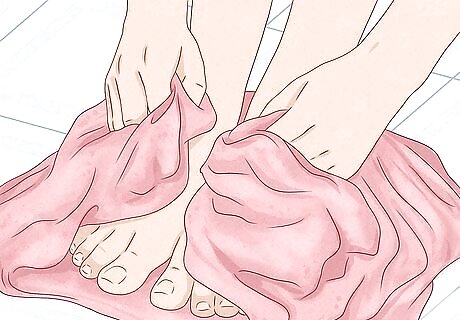
Dry your feet. Excess moisture on your feet and between your toes can promote growth of bacteria and fungi. To prevent infection, it is important to keep your feet as dry as possible. Drying after washing will also prevent the build-up of new dirt on your feet. Pat your feet dry with a clean towel instead of rubbing, especially if you have a medical condition such as diabetes. Be sure to dry between your toes because that is a common place for fungal and bacterial growth.
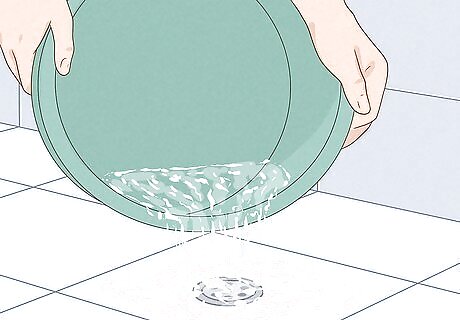
Discard the water. When your feet are all clean, dispose of the dirty, soapy water. Soap is non-toxic and can be poured down the drain or disposed of outside. Pour the contents of the tub down the drain or outside in the yard. To prevent injury, make sure the floor is dry when you are finished.
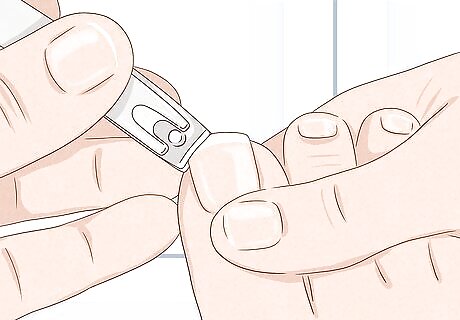
Trim your toenails. While washing your feet, you might have noticed your toenails were getting too long. Properly trimmed nails prevent over-grown toenails and the build-up of dirt underneath the nail. Be sure to use toenail clippers, not scissors. Trim the nail straight across so it is just over the toe. Cutting nails too short can lead to the development of ingrown toenails. You could also accidentally cut too far and cut into your skin. File down any pointed edges with an emery board.
Washing Your Feet in the Shower

Turn on the shower and lather up. Add washing your feet to your daily routine. Daily washing prevents foot odor and infection. Adjust the water temperature to your comfort and step into the shower. Get your washcloth/loofah wet in the water and wring it out so it’s moist, but not soaked. Use a bar of soap or pour some body wash onto the moistened washcloth/loofah. Rub together until bubbles start to form.

Wash your feet. Use a towel, loofah, or sponge to scrub the dirt away. If you have built-up dirt, you will need to scrub a little harder and use more soap. With your washcloth/loofah, gently scrub each foot focusing your attention on the arch of your foot, in between toes, and under toenails. Rinse the towel, loofah, or sponge between cleaning each foot. Add more soap if necessary. Remove any soapy bubbles or residue by thoroughly rinsing your feet. Turn the water off and step out of the shower.
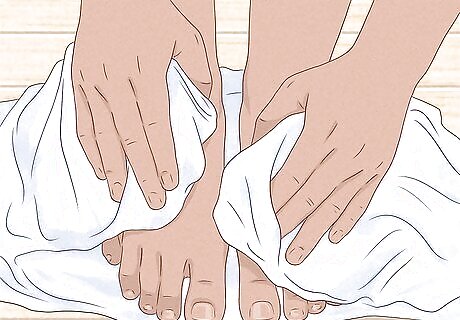
Dry your feet. Excess moisture on your feet and between your toes can promote growth of bacteria and fungi . To prevent infection, it is important to keep your feet as dry as possible. Drying after washing will also prevent the build-up of new dirt on your feet. Remove your feet from the tub and pat dry (don't rub) them with a clean towel. This is especially important if you have a medical condition like diabetes. Be sure to dry between your toes because that is a common place for fungal and bacterial growth. If you are diabetic, apply skin moisturizer to feet to prevent calluses and cracks, but avoid applying between the toes.
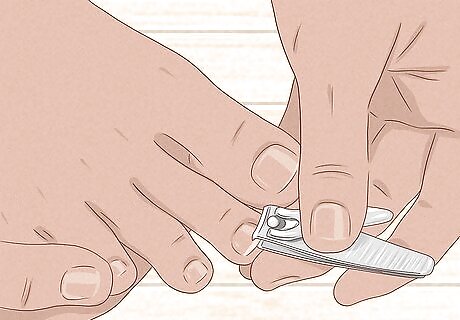
Trim your toenails. While washing your feet, you might have noticed your toenails were getting too long. Properly trimmed nails prevent over-grown toenails and the build-up of dirt underneath the nail. Be sure to use toenail clippers, not scissors. Trim the nail straight across so it is just over the toe. Cutting nails too short can lead to the development of ingrown toenails. File down any pointed edges with an emery board.
















Comments
0 comment